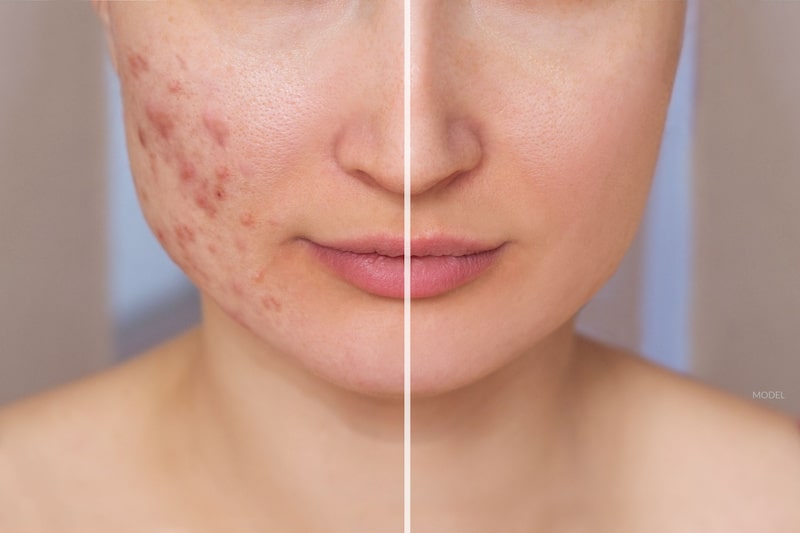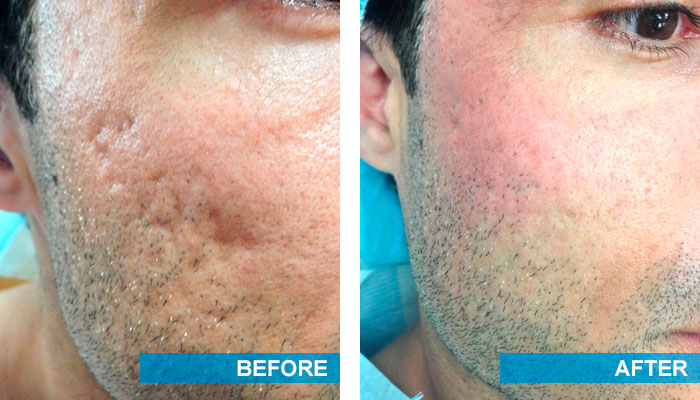Just How to Deal With Acne Scars: Proven Techniques for a Perfect Skin tone
Just How to Deal With Acne Scars: Proven Techniques for a Perfect Skin tone
Blog Article
Understanding the Numerous Skin Disease and Efficient Therapy Choices for Acne Scars
Acne scars stand for an intricate interplay of skin disease that considerably impact individuals' self-confidence and general skin wellness. Understanding the distinctive kinds of acne marks-- atrophic and hypertrophic-- along with their underlying reasons, is pivotal for figuring out reliable therapy approaches. Numerous healing options exist, ranging from advanced dermatological treatments to all-natural remedies. Nonetheless, the efficiency of these treatments often depends upon personalized evaluations by qualified experts. As we explore the landscape of acne scar monitoring, it comes to be obvious that the trip towards clearer skin might entail greater than simply topical services.
Kinds Of Acne Scars

In comparison, hypertrophic marks result from an overflow of collagen throughout the recovery process, bring about increased areas on the skin. These marks are often solid and can vary in color, occasionally appearing red or darker than the surrounding skin.
Understanding these types of acne marks is important for establishing an efficient treatment strategy - acne treatment for sensitive skin. Alternatives might include chemical peels, laser therapy, microneedling, or dermal fillers, tailored to the particular mark kind. An extensive appointment with a skin doctor can help figure out one of the most proper intervention, considering the individual's skin type, scar severity, and overall skin health and wellness
Reasons For Acne Scarring
Marking happens as an outcome of the body's all-natural healing reaction to swelling and injury caused by acne sores. When acne forms, it causes an inflammatory action, bring about the release of different cytokines and growth factors that advertise healing. This procedure can in some cases lead to extreme cells development or inadequate repair, resulting in scars.
The primary reasons for acne scarring consist of the seriousness of the acne itself, period of the sores, and private skin kinds. Severe inflammatory acne, such as cysts and nodules, is more most likely to cause scarring because of deeper tissue damages. Furthermore, improper handling of acne lesions, such as choosing or pressing, can worsen tissue injury and swelling, enhancing the likelihood of scarring.
Genetic tendency likewise plays a substantial duty; people with a household history of scarring go to a higher risk. Skin type and shade can affect scar development, as darker skin tones may experience post-inflammatory hyperpigmentation, while lighter skin may develop atrophic scars.
Ultimately, recognizing these causes is crucial in handling acne and minimizing the possibility for scarring.

Treatment Choices for Scarring
Reliable therapy choices for acne scarring vary depending on the kind and seriousness of the scars. Generally categorized right into atrophic, hypertrophic, and keloid marks, these conditions require tailored strategies for optimum outcomes.
For atrophic scars, which are defined by a loss of cells, therapies such as chemical peels, microdermabrasion, and laser therapy are commonly used. These techniques promote skin revival and promote collagen manufacturing, thereby enhancing skin appearance. Subcision, a minimally invasive procedure, can also be reliable by damaging up fibrous bands beneath the skin.
Hypertrophic and keloid scars can be more challenging to treat. Alternatives consist of corticosteroid injections to reduce swelling and flatten the scars. Sometimes, cryotherapy or laser therapy might be recommended to lessen their look.
Surgical options are readily available for serious scarring, where excision or skin grafting may be required. It's crucial for people to consult with a skin doctor to analyze their specific scar type and go over one of the most suitable treatment plan. Incorporating several therapies often yields the very best end results, making sure that each person's special skin condition is attended to effectively.
Natural Remedy and Natural Solutions
Natural solutions and natural home remedy can provide an easily accessible technique for people seeking to improve the look of acne marks (acne treatment for sensitive skin). Various ingredients discovered in the home kitchen area have actually demonstrated possible advantages in boosting skin structure and promoting healing

One more effective choice is lemon juice, which functions as a natural exfoliant and can lighten hyperpigmentation. However, it should be utilized cautiously, as it Visit Your URL may create photosensitivity. Oatmeal masks are also helpful; their mild peeling can assist eliminate dead skin cells while soothing irritation.
Vital oils, such as tea tree oil and lavender oil, can further sustain mark recovery due to their antimicrobial properties. It is important to carry out click a spot test before applying any kind of remedy to guarantee there are no damaging reactions. These natural services can be a complementary method in the trip to reduce acne marks.
Avoiding Future Scarring
Embracing an aggressive method to skincare can considerably minimize the threat of establishing future acne marks. Routine cleansing, exfoliation, and hydration can help maintain skin wellness and protect against blocked pores.
Additionally, avoiding the lure to select or press acne lesions is vital, as this can cause swelling and subsequent scarring. Instead, people must concentrate on using topical treatments that advertise recovery and reduce swelling. Components such as salicylic acid, benzoyl peroxide, and retinoids are known for their effectiveness in handling acne and minimizing marks.
Sunlight protection is an additional important part; exposure to UV rays can darken marks and hamper healing. Making use of a broad-spectrum sun block daily can minimize these results.
Last but not least, preserving a healthy and balanced diet plan rich in antioxidants and staying hydrated assistances skin regrowth. By executing these safety nets, individuals can considerably lower their risk of future scarring and promote overall skin wellness.
Verdict
In final thought, an extensive understanding of acne scars, incorporating both hypertrophic and atrophic types, is important for reliable treatment approaches. Consultation with a dermatologist continues to be important to develop tailored methods that take into consideration private skin kinds and mark severity, eventually enhancing the efficacy of mark administration strategies.
Acne marks represent an intricate interplay of skin problems that substantially effect individuals' self-confidence and overall skin health. The 2 primary classifications of acne marks are atrophic Discover More and hypertrophic marks. These scars are more identified into 3 subtypes: ice pick marks, which are narrow and deep; boxcar marks, which are wider and have well-defined sides; and rolling marks, which create a wave-like appearance due to uneven skin texture.
A complete consultation with a dermatologist can help identify the most ideal intervention, taking right into account the individual's skin type, mark seriousness, and overall skin health.
Appointment with a skin doctor remains crucial to create tailored techniques that think about individual skin kinds and scar extent, eventually boosting the effectiveness of mark monitoring methods.
Report this page